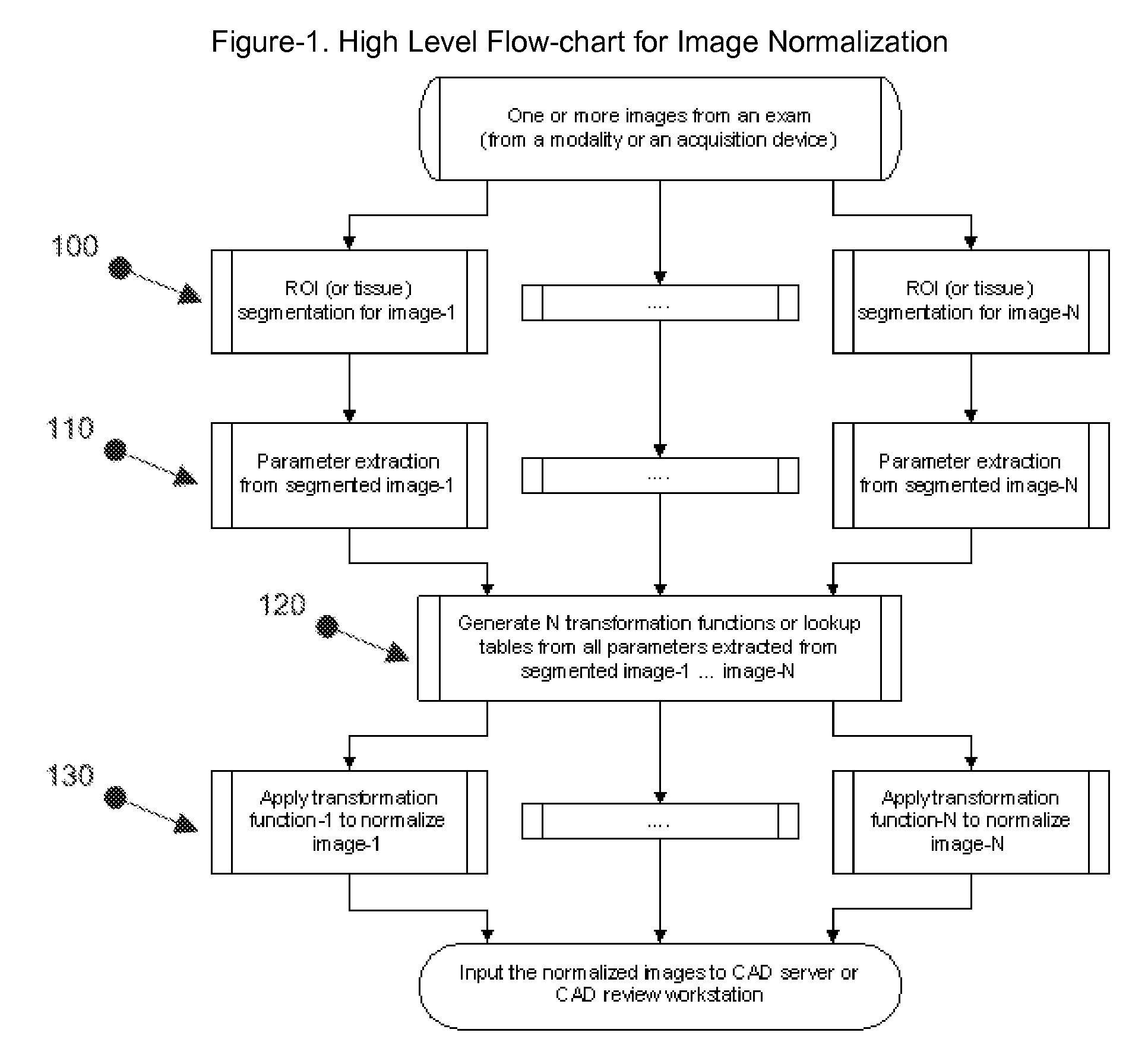Image normalization for computer-aided detection, review and diagnosis
a computer-aided detection and image normalization technology, applied in image enhancement, image analysis, instruments, etc., can solve the problems of losing important information in digital images, and achieve the effect of robust handling of detection and diagnosis tasks
- Summary
- Abstract
- Description
- Claims
- Application Information
AI Technical Summary
Benefits of technology
Problems solved by technology
Method used
Image
Examples
Embodiment Construction
[0016]The method of the present invention analyzes individual image characteristics, generates transformation parameters dynamically in an optimized manner, and applies the generated transform to normalize images as they were acquired from a consistent pseudo-modality.
[0017]Referring to FIG. 1, a block diagram of the high level flow-chart for image normalization starts from inputting one or more images from an exam and sometime plus from another exam of the same patient that was taken previously.
[0018]In step 100, segmentation to obtain a region of interest, which usually is a body part, such as breast tissue inside breast border.
[0019]In step 110, a set of image characteristic parameters, such as, mean and standard deviation, for each image are extracted from the region of interest in each image.
[0020]In step 120, all sets of parameters from all images are processed to obtain a set of optimal parameters for each image transformation function.
[0021]In step 130, the transformation fu...
PUM
 Login to View More
Login to View More Abstract
Description
Claims
Application Information
 Login to View More
Login to View More - R&D
- Intellectual Property
- Life Sciences
- Materials
- Tech Scout
- Unparalleled Data Quality
- Higher Quality Content
- 60% Fewer Hallucinations
Browse by: Latest US Patents, China's latest patents, Technical Efficacy Thesaurus, Application Domain, Technology Topic, Popular Technical Reports.
© 2025 PatSnap. All rights reserved.Legal|Privacy policy|Modern Slavery Act Transparency Statement|Sitemap|About US| Contact US: help@patsnap.com



